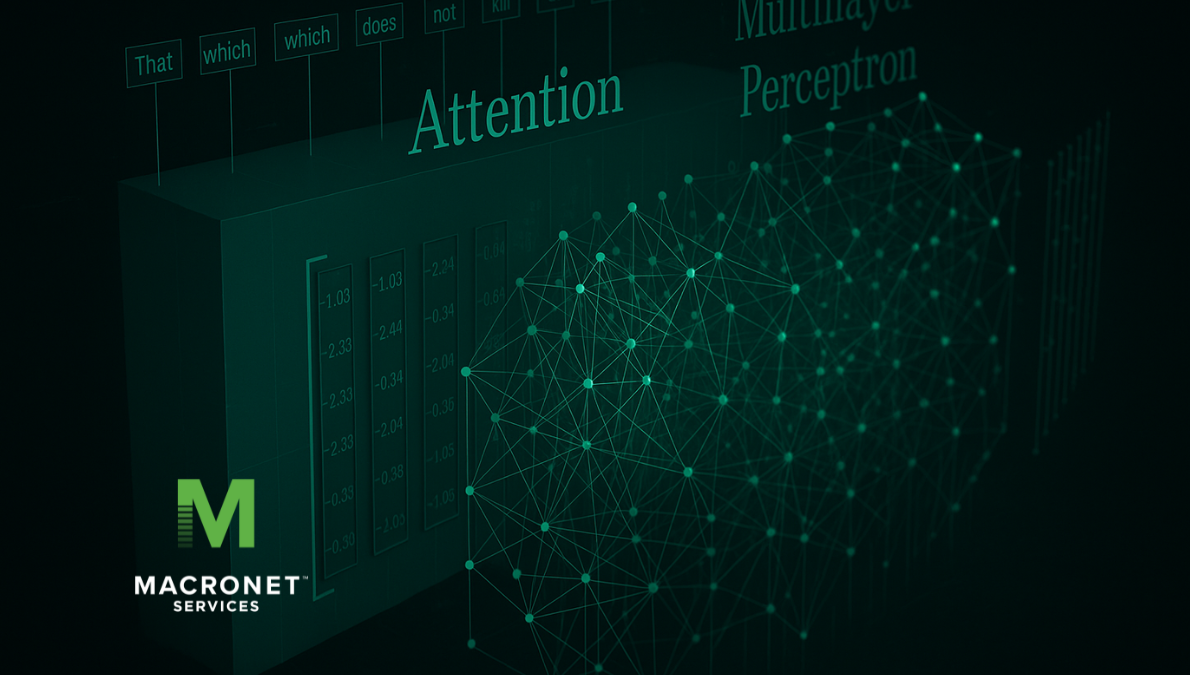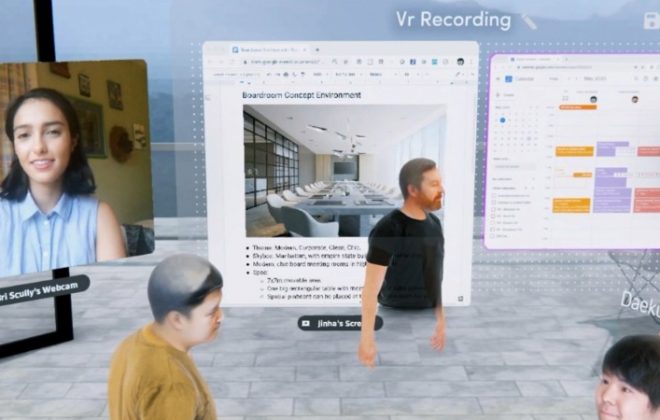The Latest in Large Language Models
As most business leaders are aware, artificial intelligence (AI) is reshaping how businesses operate, innovate, and compete. At the forefront of this revolution are large language models (LLMs)—sophisticated AI systems driving breakthroughs in customer engagement, operational efficiency, and strategic decision-making. For IT and business decision-makers, understanding the latest LLMs is critical to harnessing their potential for transformative outcomes. In this article, we explore the cutting-edge advancements in LLMs, focusing on their parameter counts, technical architectures, and business applications. From ChatGPT 4.0 to Grok 3, Llama 3.1 405B, Gemini 2.5 Pro, Mistral Large 2, and speculative giants like BaGuaLu and ByteDance’s 5T model, we provide a comprehensive guide to help you lead in the AI era. Visit The Macro AI Podcast for more insights to drive your AI strategy.
What Are Parameters and Why Do They Matter?
To grasp the power of LLMs, let’s start with a key metric: parameter count. Parameters are the neural connections within an AI model, fine-tuned during training to encode patterns in data—whether text, images, or complex datasets. Think of them as the model’s cognitive capacity, enabling it to understand context, generate responses, and solve problems. For example, a model with 1 trillion parameters can theoretically handle more nuanced tasks—like drafting legal contracts or forecasting market trends—than one with 10 billion.
For business leaders, parameter count is a benchmark because it correlates with a model’s ability to tackle sophisticated challenges. However, more parameters mean higher computational costs, requiring robust infrastructure like multi-GPU clusters or cloud services. IT decision-makers must balance scale with efficiency, as smaller, optimized models can sometimes outperform larger ones. This trade-off is central to selecting the right LLM for your organization.
Today’s Leading Large Language Models: Technical and Business Insights
Let’s dive into the top LLMs shaping the AI landscape, highlighting their parameter counts, technical strengths, and business applications. Each model offers unique capabilities, making them suited for specific use cases.
ChatGPT 4.0 (OpenAI)
- Parameter Count: ~1.76 trillion (estimated, Mixture-of-Experts with 8 models at 220 billion each)
- Technical Profile: ChatGPT 4.0 employs a dense transformer architecture, with a Mixture-of-Experts (MoE) design where eight specialized sub-models collaborate. Trained on vast datasets, it excels in multimodal tasks—processing text, images, and basic reasoning. Its reinforcement learning with human feedback (RLHF) ensures high-quality, context-aware outputs.
- Business Applications: Its versatility makes it ideal for customer service chatbots, content generation (e.g., marketing copy), and data analytics (e.g., financial forecasting). Retail and media firms leverage its image-processing for visual analytics, while its broad applicability suits enterprises seeking a one-size-fits-all solution. However, its proprietary nature locks users into OpenAI’s ecosystem, requiring careful cost management.
- Why It Matters: For businesses prioritizing quick deployment and multimodal capabilities, ChatGPT 4.0 is a go-to, though IT leaders must plan for subscription costs and integration challenges.
Claude 3.7 Sonnet (Anthropic)
- Parameter Count: ~400 billion (estimated)
- Technical Profile: Claude 3.7 uses a dense transformer optimized for safety and ethical alignment, with RLHF to minimize biased or harmful outputs. Independently trained for specific performance profiles, it excels in precision tasks like coding and policy drafting. Its architecture prioritizes interpretability, making it a favorite in regulated sectors.
- Business Applications: Claude shines in healthcare (e.g., summarizing patient records), finance (e.g., compliant reporting), and legal (e.g., contract analysis). Its human-like conversational tone enhances client-facing applications, such as advisory services. However, it may lag in creative, open-ended tasks compared to ChatGPT.
- Why It Matters: For industries with strict compliance needs, Claude’s safety focus reduces risk, but its proprietary model requires strategic vendor management.
Grok 3 (xAI)
- Parameter Count: 2.7 trillion
- Technical Profile: Grok 3’s massive scale—trained on 12.8 trillion tokens with 200 million GPU-hours—makes it a dense transformer powerhouse. Designed for deep reasoning, it integrates real-time data from platforms like X, enabling dynamic insights. Its architecture supports complex simulations and scientific modeling.
- Business Applications: Grok 3 is transformative for R&D-intensive sectors like pharmaceuticals (e.g., drug discovery simulations) and aerospace (e.g., systems design). Its market sentiment analysis capabilities, powered by X data, benefit finance and marketing teams. However, its resource intensity demands significant infrastructure investment.
- Why It Matters: For enterprises tackling frontier challenges, Grok 3’s scale is unmatched, but IT leaders must ensure scalable cloud or on-premises solutions.
Llama 3.1 405B (Meta AI)
- Parameter Count: 405 billion
- Technical Profile: The largest open-source LLM, Llama 3.1 405B uses a standard transformer with optimized pretraining for fine-tuning. Its open-source nature allows customization, though it requires substantial computational resources (multi-GPU setups).
- Business Applications: Llama excels in logistics (e.g., supply chain optimization), e-commerce (e.g., personalized recommendations), and research (e.g., data synthesis). Its flexibility lets firms tailor it to proprietary datasets, reducing dependency on vendors. However, deployment complexity demands skilled IT teams.
- Why It Matters: For cost-conscious firms with technical expertise, Llama’s open-source model offers control and scalability, ideal for bespoke AI solutions.
Gemini 2.5 Pro (Google DeepMind)
- Parameter Count: ~1.6 trillion (estimated for Gemini Ultra range)
- Technical Profile: A multimodal dense transformer, Gemini 2.5 Pro processes text, images, video, and audio. Its integration with Google’s cloud ecosystem enhances scalability, while specialized variants (e.g., CodeGemma, TxGemma) target niche applications like coding and biomedicine.
- Business Applications: Retail leverages Gemini inventory management with visual stock checks, while media firms use it for video content analysis. Its cloud integration streamlines deployment, but its proprietary nature limits customization.
- Why It Matters: For integrated ecosystems, Gemini’s multimodal capabilities and cloud support drive efficiency, but vendor lock-in is a consideration.
Mistral Large 2 (Mistral AI)
- Parameter Count: 123 billion
- Technical Profile: An open-source sparse MoE model, Mistral Large 2 activates only 39 billion parameters during inference, reducing computational costs. Its transformer-based design is optimized for low-latency tasks, with strong multilingual capabilities.
- Business Applications: Ideal for real-time customer support and multilingual document processing, it complies with GDPR, making it a fit for European firms. Its efficiency suits startups and mid-sized businesses, though it’s less suited for ultra-complex reasoning.
- Why It Matters: For cost-sensitive enterprises needing privacy-compliant solutions, Mistral offers a lean, powerful option, but may not match Grok’s reasoning depth.
Technical Deep Dive: Architectures and Training Strategies
For IT decision-makers, understanding the technical underpinnings of LLMs is key to selecting the right model. Most LLMs rely on transformer architectures, stacking layers of interconnected nodes (parameters) to process inputs and generate outputs. Here’s how the models differ:
- Dense Transformers: ChatGPT 4.0, Claude 3.7, Grok 3, and Gemini 2.5 Pro use dense transformers, activating all parameters during inference. This maximizes generalization for tasks like analytics or multimodal processing but increases computational demands.
- Sparse Mixture-of-Experts (MoE): Mistral Large 2’s MoE design activates a subset of parameters, slashing costs for real-time applications. ChatGPT 4.0’s MoE (8 sub-models) balances scale and efficiency.
- Training Techniques: RLHF, used by Claude and ChatGPT, refines outputs based on human feedback, enhancing safety and quality. Grok 3’s 12.8 trillion token dataset fuels its reasoning prowess, while Llama’s pretraining optimizes fine-tuning.
Parameter count drives capacity, but data quality, fine-tuning, and efficiency are equally critical. For example, Mistral’s 123 billion parameters outperform larger models in specific tasks due to its MoE efficiency. IT leaders must align model architecture with infrastructure—dense models like Grok require high-end GPUs, while MoE models like Mistral run on lighter setups.
The Future: Trillion-Scale Models and Beyond
The LLM race is heating up, with speculative models pushing boundaries. Here’s what’s on the horizon:
- BaGuaLu (China): Claimed at 174 trillion parameters, BaGuaLu aims for brain-like intelligence, potentially revolutionizing drug discovery or climate modeling. Trained on a Sunway supercomputer, its scale is unprecedented, but no updates since 2022 suggest it may be stalled or overstated.
- ByteDance’s 5T Model: Rumored at 5 trillion parameters, ByteDance’s model uses “di-reasoning” reinforcement learning, enhancing strategic decision-making and predictive analytics. Its proprietary nature and TikTok’s data could make it a marketing powerhouse, though it remains unverified.
- NEAR AI’s 1.4T Model: An open-source initiative from the NEAR Foundation, this model targets decentralized AI, offering accessible scale for Web3 applications. It’s still in development but could democratize trillion-scale AI.
- Specialized Models: DeepSeek-Prover-V2 (671B) automates math proofs, aiding engineering and finance, while OLMo-2-32B (32B) shows smaller models can compete through efficiency.
These models signal a shift toward specialization and hybrid strategies. Businesses must prepare for trillion-scale infrastructure while leveraging efficient models for quick wins. Regulatory shifts, especially in Europe’s GDPR landscape, may favor open-source options like Mistral or NEAR AI.
Leading in the AI Era: Practical Strategies
For IT and business decision-makers, deploying LLMs requires a strategic approach:
- Align with Business Goals: Start with your problem—e.g., customer insights (Mistral, ChatGPT), R&D innovation (Grok, Llama), or multimodal analytics (Gemini). Map AI capabilities to strategic outcomes. Build and internal AI Center of Excellence if you don’t already have one.
- Budget for Infrastructure: Trillion-scale models like Grok 3 demand scalable cloud or on-premises GPUs. Smaller models like Mistral reduce costs but require fine-tuning expertise. Consider your network architecture and using Tier 1 ISPs for internet transit or wavelengths for privacy.
- Foster AI Literacy: Train teams to integrate LLMs into workflows, ensuring ROI. For example, use Llama for bespoke solutions or Claude for compliant processes.
- Monitor Regulatory Trends: GDPR and data privacy laws favor open-source models, especially in Europe. Plan for compliance to avoid penalties.
- Pilot and Scale: Test smaller models (e.g., NVIDIA’s 72B) for ROI, then scale to larger ones (e.g., Grok) as needs grow.
- Communicate the Vision: Show stakeholders how AI drives competitive advantage—e.g., cost savings with Mistral or innovation with Grok. Manage expectations, as trillion-scale models are years from mainstream adoption.
Why This Matters for Your Business
LLMs are no longer a luxury—they’re a necessity for staying competitive. Whether you’re optimizing supply chains, enhancing customer experiences, or accelerating R&D, the right LLM can deliver measurable value. ChatGPT 4.0 and Gemini 2.5 Pro offer multimodal versatility, Claude 3.7 ensures compliance, Grok 3 pushes scientific frontiers, Llama 3.1 405B enables customization, and Mistral Large 2 maximizes efficiency. Future models like BaGuaLu and ByteDance’s 5T promise even greater potential, but practical deployment requires strategic planning.
For IT leaders, the challenge is selecting models that fit your infrastructure and budget. For business leaders, it’s about translating AI into revenue, efficiency, and innovation. Together, you can build an AI-driven organization that thrives in the global market. Contact us anytime at Macronet Services to discuss how we can help with AI solutions, securing AI, or designing a Tier 1 global network infrastructure for your business.
Tags In
Related Posts
Recent Posts
- Securing Autonomous AI Agents: Identity-Anchored Autonomy for Enterprise Risk & Resilience
- The Definitive Guide to Enterprise Telecom Agreements: MSA, SLA, and DIA Negotiation Best Practices for Global Carriers
- The AI Privacy Engineer: Architecting Trust and Compliance in the Age of AI
- AI in CCaaS RFPs: Essential Features for Next-Gen Contact Centers
- The Future of CCaaS: How AI Will Transform Contact Centers by 2035
Archives
- October 2025
- September 2025
- August 2025
- July 2025
- June 2025
- May 2025
- April 2025
- March 2025
- February 2025
- January 2025
- December 2024
- November 2024
- October 2024
- September 2024
- August 2024
- July 2024
- June 2024
- May 2024
- April 2024
- March 2024
- February 2024
- January 2024
- December 2023
- November 2023
- October 2023
- September 2023
- August 2023
- July 2023
- June 2023
- May 2023
- April 2023
- March 2023
- February 2023
- January 2023
- December 2022
- November 2022
- October 2022
- September 2022
- August 2022
- July 2022
- June 2022
- May 2022
- April 2022
- March 2022
- February 2022
- January 2022
- December 2021
- November 2021
- October 2021
- September 2021
- August 2021
- July 2021
- June 2021
- May 2021
- April 2021
- March 2021
- December 2020
- September 2020
- August 2020
- July 2020
- June 2020
Categories
- All (19)
- Satellite (1)
- Artificial Intelligence (8)
- Travel (1)
- Sports (1)
- Music (1)
- News (280)
- Design (3)
- Clients (12)
- Uncategorized (1)
- Tips & tricks (25)
- Inspiration (9)
- Client story (1)
- Unified Communications (196)
- Wide Area Network (309)
- Cloud SaaS (60)
- Security Services (71)




